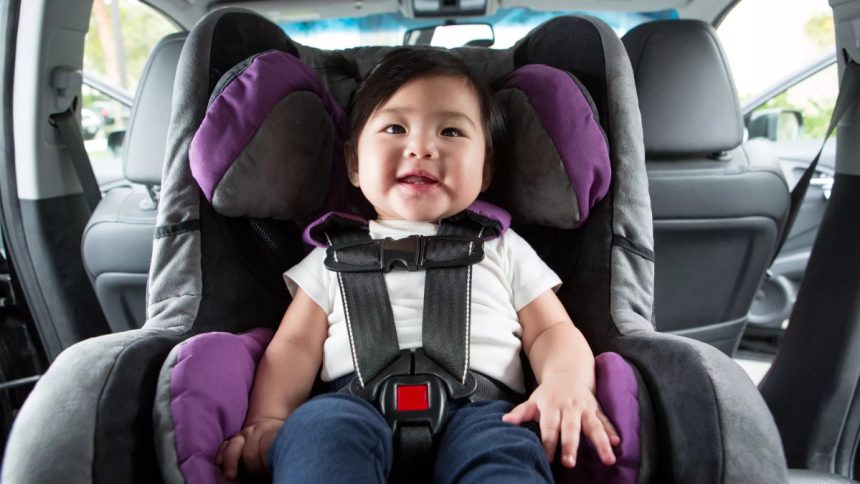As parents, our top priority is the safety and well-being of our children, especially when it comes to traveling by car. While road trips and daily commutes may seem routine, the risk of a car accident is always present. In fact, having the proper resources, such as knowing when to contact a motor vehicle accident lawyer in Phoenix, can be crucial after a crash. Car seats are a vital line of defense, protecting your child from injury or worse. Yet, many parents might not be aware of just how essential proper car seat safety is. In this article, we’ll explore why car seat safety matters and share tips on how to ensure your child is well-protected during every ride.
The Importance of Car Seats in Preventing Injuries
Car seats are designed to absorb the impact during a crash, keeping a child’s body secure and reducing the likelihood of serious injury. According to the National Highway Traffic Safety Administration (NHTSA), the correct use of car seats reduces the risk of fatal injury by 71% for infants and 54% for toddlers. However, these benefits are only realized when the car seat is properly installed and suited to your child’s size and age.
How Car Seats Work to Protect Your Child
During a car accident, a sudden stop can cause passengers to be thrown forward, which can be especially dangerous for young children. Car seats are engineered to distribute crash forces across the strongest parts of a child’s body, typically the chest and hips, minimizing the impact. They also help to prevent children from being ejected from the vehicle, a scenario that significantly increases the risk of severe injury or death.
Common Car Seat Mistakes and How to Avoid Them
Unfortunately, a high percentage of car seats are not used correctly, which compromises their effectiveness. Here are some common mistakes parents make and how to avoid them:
- Incorrect Installation: One of the most frequent errors is improper installation. A car seat should be tightly secured, with no more than one inch of movement when tugged at the base. Use either the seat belt or the LATCH system (Lower Anchors and Tethers for Children), but never both at the same time. Many local fire departments and car seat inspection stations offer free checks to ensure your car seat is installed properly.
- Using the Wrong Car Seat for Your Child’s Age or Size: Car seats come in different types, designed to fit children at various stages of growth. Using a car seat that’s too small or too big can reduce protection. Ensure that your car seat fits your child’s current height and weight requirements and always follow the manufacturer’s guidelines.
- Transitioning Too Soon to a Forward-Facing Seat: Rear-facing seats offer better support for a young child’s head, neck, and spine during a crash. It’s recommended to keep children in a rear-facing seat for as long as possible, at least until the age of 2 or until they reach the maximum weight or height limit allowed by the car seat manufacturer.
- Not Adjusting the Harness Properly: The car seat’s harness should be snug enough that you can’t pinch any extra webbing between your fingers. If the harness is too loose, your child can be thrown forward during a crash. Make sure the chest clip is at armpit level to help keep the straps in the correct position.
- Using Expired or Damaged Car Seats: Car seats have expiration dates, usually six to ten years after the date of manufacture. Over time, the materials in the seat can degrade, making them less effective in a crash. Additionally, avoid using car seats that have been in previous accidents, as they may have hidden damage.
Choosing the Right Car Seat for Your Child
Selecting the correct car seat depends on your child’s age, weight, and height. Here’s a brief guide to help you choose:
- Infant Car Seats (Rear-Facing Only): Ideal for newborns and babies up to 2 years old. These seats are rear-facing to provide maximum support to your baby’s head, neck, and spine.
- Convertible Car Seats: These seats can be used in both rear-facing and forward-facing positions, making them a long-term option as your child grows. They’re perfect for toddlers and can typically accommodate children from infancy up to 4 or 5 years old, depending on the model.
- Booster Seats: Once your child outgrows a forward-facing car seat (usually around 4-7 years old), a booster seat can position them correctly so that the vehicle’s seat belt fits properly over their chest and lap.
- Seat Belts: Older children (generally ages 8-12) who have outgrown booster seats should use the vehicle’s seat belt. Make sure the belt fits snugly over the child’s shoulder and across their lap.
The Long-Term Impact of Car Seat Safety
Investing time in learning how to properly install and use a car seat can make a life-saving difference in the event of an accident. It’s also essential to regularly check that your car seat is still appropriate for your child as they grow. While the cost of a car seat may seem high, the protection it offers is invaluable.
Final Thoughts
Car seat safety is not a topic to overlook or take lightly. As parents, ensuring that our children are safe at all times, especially on the road, is our responsibility. By following car seat safety guidelines and avoiding common mistakes, you can protect your child from serious injury or death in the event of a crash. Always prioritize the correct installation and use of car seats, and remember to regularly check that your seat meets safety standards as your child grows.
Lynn Martelli is an editor at Readability. She received her MFA in Creative Writing from Antioch University and has worked as an editor for over 10 years. Lynn has edited a wide variety of books, including fiction, non-fiction, memoirs, and more. In her free time, Lynn enjoys reading, writing, and spending time with her family and friends.















